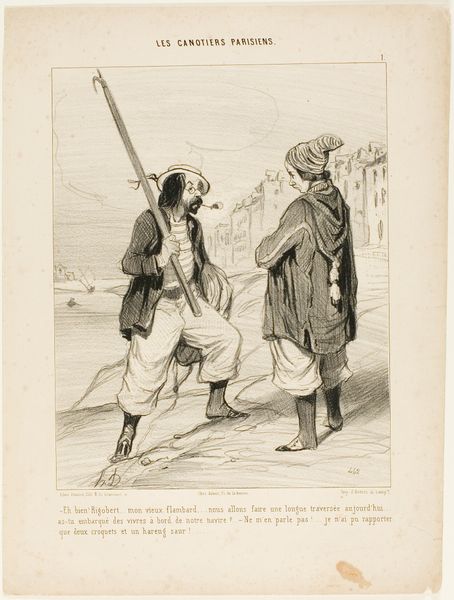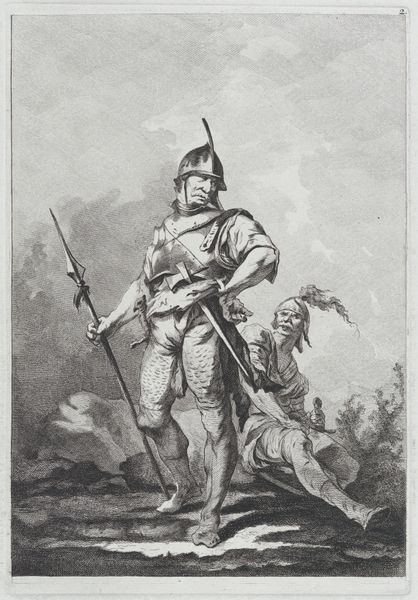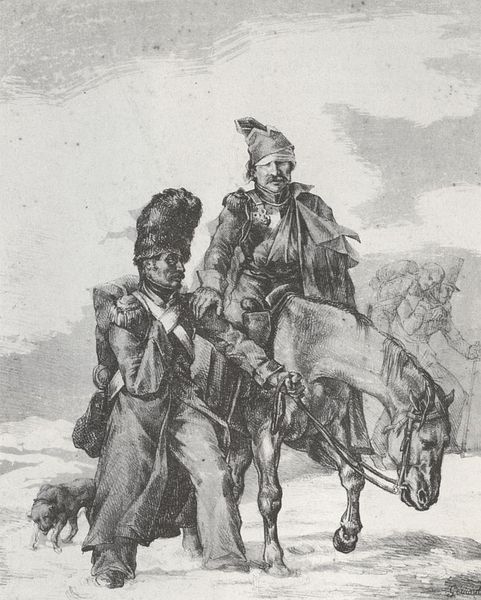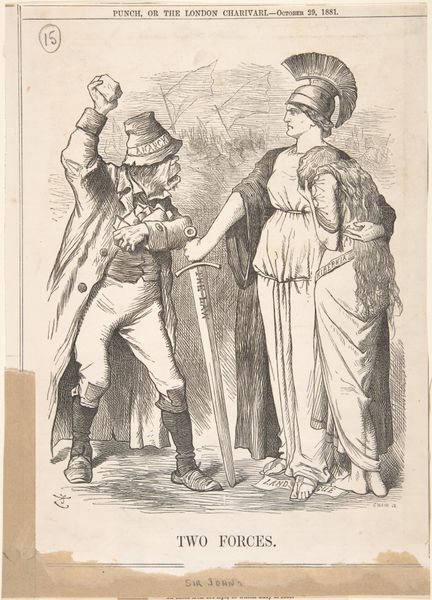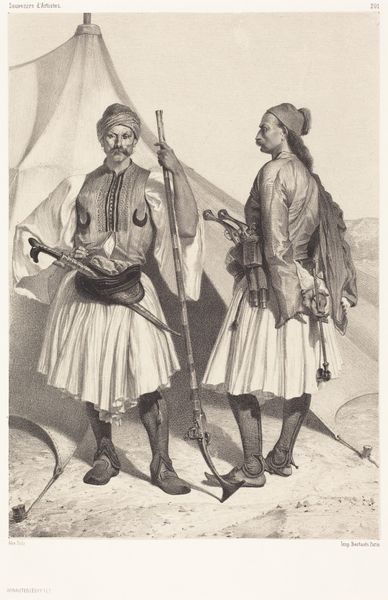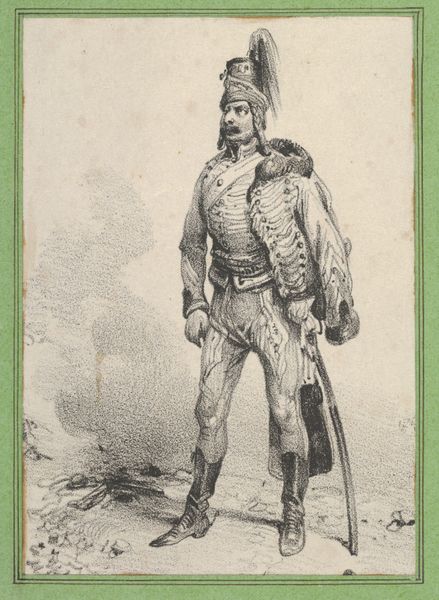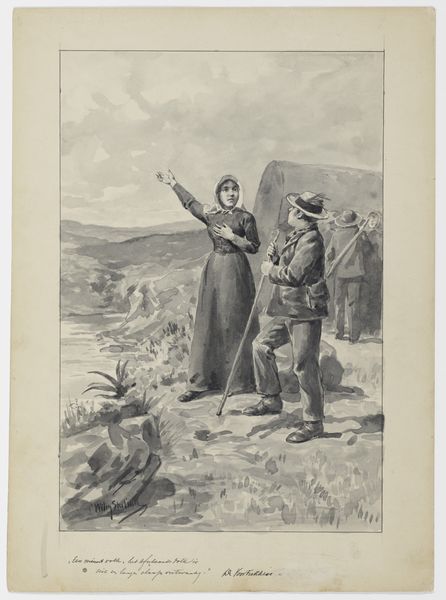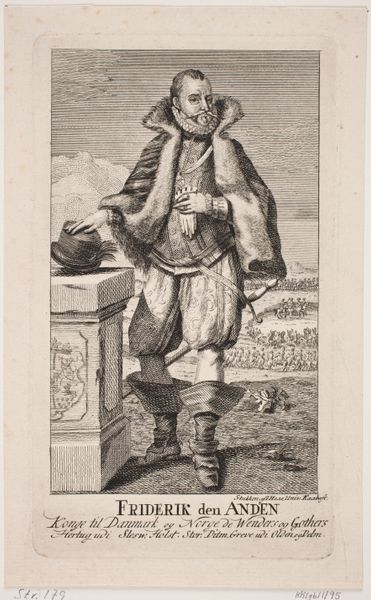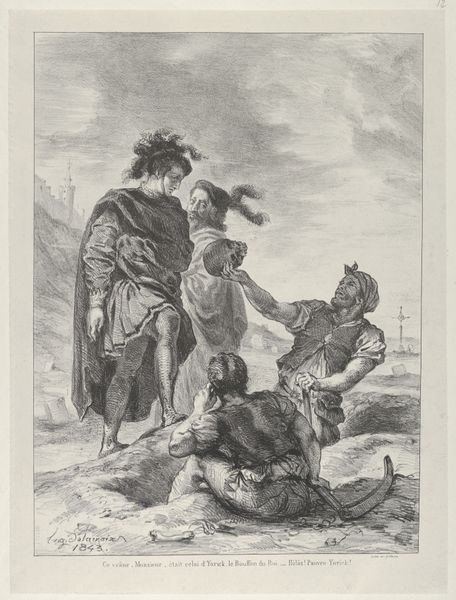
Soldier with a woman on his arm and a child on his back 1820 - 1866
0:00
0:00
drawing, print
#
portrait
#
drawing
# print
#
landscape
#
figuration
#
child
#
soldier
#
men
#
genre-painting
Dimensions: Sheet: 4 1/8 × 3 5/16 in. (10.5 × 8.4 cm) Mount: 12 3/8 x 4 5/16 in. (31.4 x 10.9 cm)
Copyright: Public Domain
Curator: What strikes you first about this drawing? It’s by Victor Adam, dating roughly from 1820 to 1866, and is entitled "Soldier with a woman on his arm and a child on his back." Editor: The vulnerability, I think. Despite the soldier’s uniform and weapon, the figures seem exposed, unprotected in this sketchy landscape. The line work is so delicate. Curator: Adam was a master of lithography, a printmaking technique allowing for detailed reproduction. This piece speaks to the evolving image of the military man. We see him not only as a fighter, but a caretaker in times of conflict. How interesting that the genre blends portraiture, landscape, and figuration. Editor: It does beg questions. Were images like this circulated as propaganda, softening the perception of war? Consider the social position of military families, and the artistic demand for romanticized images, where labor, survival and hope meet each other in unexpected circumstances. What audience was meant to consume such a portrayal? Curator: Good points. Perhaps this print aimed to instill patriotic sentiment. Look how carefully Adam rendered the details of the uniform against the simplicity of the woman's dress and child's swaddling. It suggests different social roles amidst displacement. It would be worthwhile to learn more about the prints' method of distribution. Editor: Indeed, the work seems aimed at the wealthy, with a romanticized rather than real take on wartime hardship. But I would also challenge us to think further about the impact of image making on social realities; the creation of mythologies related to nationhood or cultural heritage that paintings are always imbricated within. It certainly raises several issues about social performance, wealth, class and politics of seeing during the era. Curator: This nuanced reading highlights Adam's artistry – a piece ostensibly depicting strength ultimately reveals fragility and complex roles. Thanks for illuminating it with the material lens of labour and dissemination. Editor: And thank you for providing a crucial context—historical and societal forces—that help frame such powerful visuals for diverse viewers.
Comments
No comments
Be the first to comment and join the conversation on the ultimate creative platform.
